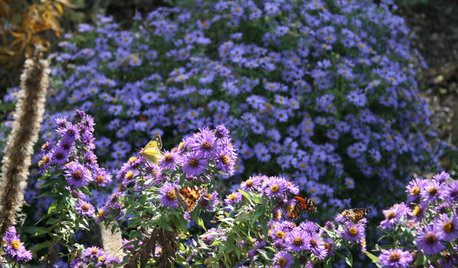Am I hand pollinating incorrectly?
simplyoranges
11 years ago
Related Stories

WINTER GARDENING6 Reasons I’m Not Looking Forward to Spring
Not kicking up your heels anticipating rushes of spring color and garden catalogs? You’re not alone
Full Story
DECORATING GUIDESThe Dumbest Decorating Decisions I’ve Ever Made
Caution: Do not try these at home
Full Story
GARDENING GUIDESHow I Learned to Be an Imperfect Gardener
Letting go can lead to a deeper level of gardening and a richer relationship with the landscape. Here's how one nature lover did it
Full Story
LIFEYou Said It: ‘I Actually Prefer Small Houses’ and Other Quotables
Design advice, inspiration and observations that struck a chord this week
Full Story
FARM YOUR YARDHello, Honey: Beekeeping Anywhere for Fun, Food and Good Deeds
We need pollinators, and they increasingly need us too. Here, why and how to be a bee friend
Full Story
GARDENING AND LANDSCAPINGBid Bad Garden Bugs Goodbye and Usher In the Good
Give ants their marching orders and send mosquitoes moseying, while creating a garden that draws pollinators and helpful eaters
Full Story
FLOWERS15 Native Flowers That Attract Butterflies
By picking plants from this list that are right for your location, you’ll get colorful blooms and support pretty pollinators
Full Story
FLOWERS AND PLANTSHelp Monarchs and Other Butterflies by Planting Common Milkweed
Summer-blooming Asclepias syriaca is an important larval host plant for the monarch butterfly and attracts a number of pollinating insects
Full Story
EVENTSOn Show: The Ingenuity of Ancient Architecture
A German exhibit celebrates the diversity of traditional homes built with materials at hand
Full Story
RANCH HOMESMy Houzz: Paint and Pluck Revamp a Portland Ranch
A 1930s fixer-upper becomes a cheery and personal home at the hands of an industrious homeowner
Full StoryMore Discussions







terrybull
simplyorangesOriginal Author
Related Professionals
Norfolk Landscape Architects & Landscape Designers · Baltimore Landscape Architects & Landscape Designers · Fillmore Landscape Architects & Landscape Designers · Otsego Landscape Architects & Landscape Designers · Rossville Landscape Architects & Landscape Designers · Lakeland Landscape Contractors · Canton Landscape Contractors · Clearlake Landscape Contractors · Hilton Head Island Landscape Contractors · Kearny Landscape Contractors · Ramsey Landscape Contractors · Sugar Hill Landscape Contractors · Tewksbury Landscape Contractors · Ashburn Driveway Installation & Maintenance · Barrington Driveway Installation & MaintenanceEdymnion
simplyorangesOriginal Author
digdirt2
jean001a
simplyorangesOriginal Author
missourigardener1
simplyorangesOriginal Author
digdirt2
simplyorangesOriginal Author
digdirt2